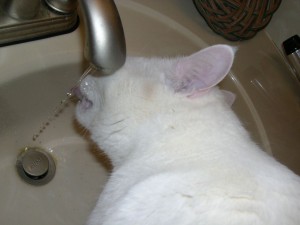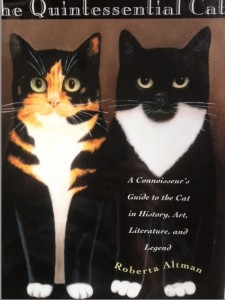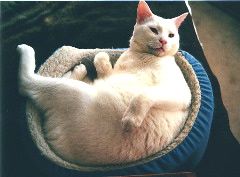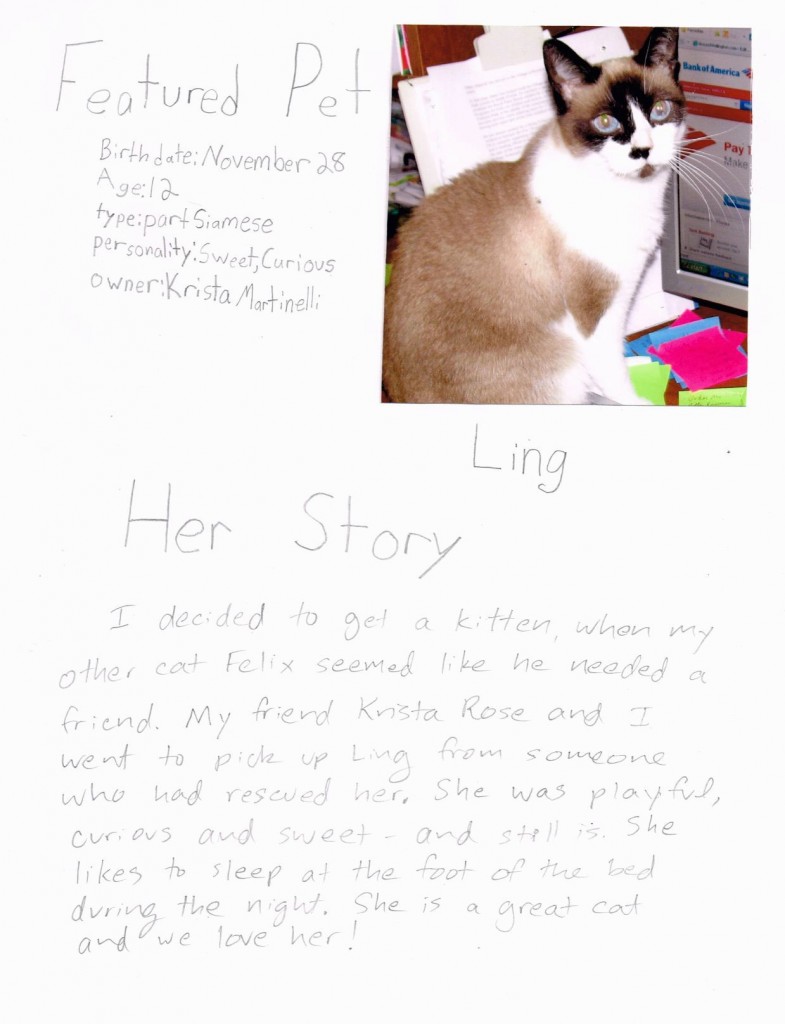So . . . not everyone’s a dog lover
By Barbara Phillippi
This month, I’d like to share some cat “tales.”
There is an oft-asked question: “Are you a cat person, or a dog person?” I write a dog interest column, so it might be assumed that dogs are my pet preference. But the last couple of years are the first time in my life that there hasn’t been at least one resident cat in my home.
Most of us are aware that the domestic cat was revered and worshiped in early Egyptian culture, but did you know that during the Middle Ages, in Europe, sorcerers were thought to be able to turn themselves into cats? Pope Gregory XI launched an inquisition, in which people who owned or helped a cat paid with their lives. The poor animals suffered various types of ghastly torture, and were put to death by the thousands, often by being incinerated while alive.
Hundreds of books have been written about feline history: behavior, breeds, folklore, literature, etc. There’s just no room to expand here – on the myriad of topics that feline aficionados might “purrruse.” If you are a cat person, bookstores and the library are chocked full of “cat” books, but may I recommend one of dozens that I’ve read, one that I consider exemplary?
“The Quintessential Cat, A Connoisseur’s Guide to the Cat in History, Art, Literature, and Legend” by Roberta Altman. This book is a great read, and not just for cat people. You won’t put it down easily.
The first kitty I remember was a sweet little striped female named Nellie, who moved in with us, grateful for a reprieve from meager success hunting in the winter in a nearby hedgerow. My cousin liked to dress her in doll clothes, and plop her in a miniature chair for “tea parties.” One day, Nellie had had enough, left the house, and was found several days later, hung on a strand of fence by the strings of a doll bonnet. The horror of that discovery has stayed with me for decades.
Another childhood kitty was “Vel,” named because of her propensity to sleep in an empty Vel detergent box behind the kitchen stove.
When I was raising my own family, we lived in a remote rural area, where people “from the city” (Buffalo, Rochester, NY) still come on weekends and during vacation to summer cabins and hunting camps in the woods. When they pack up and move back, at the beginning of the school year or end of hunting season, they leave unwanted pets, mostly cats, behind. “Oh, they’ll go to that nice farm down in the valley, and the farmer will give them milk,” they rationalize.
That never happens. There is a feline pecking order in every dairy barn, and strange cats are not welcome. They are attacked by dogs or the resident Tom, injured by being stepped on by a cow, and invariably driven away, with few hunting and survival skills. Most cats who’ve lived with me have arrived sick and starving because of the “nice farmer” myth.
Over my lifetime, there have been, among a couple dozen names, “Maxi the Taxi,” Pedro, Eddie, Perky, Bonnie, Rosie, Blanche, Cotton, Tigger, Two, Three, Wishbone, Petal, Caesar, Wanda Kim Bennett, Babe, and, still living in my old home in NY State, sweet old Charlie.

My daughter has always had at least one cat, and she often names her pets after her friends; Cindy, Amy, Billy. Her current companion, Billy, age 12, is a hefty 22 lb. load of lovin’ feline. She agonizes about finding ways to help him lose weight. If she gives him “diet” cat food, he eats twice as much. He howls with disbelief if his rations are shorted, or if she gets up late to feed him.
Billy is a big, white, goofy guy. One of his favorite sleeping places is an ordinary plastic bag on the floor. His best toy is a piece of woven strapping tape, and he likes to drink from the faucet in the bathroom. But he never misses greeting folks at the door, or loving his caretaker with abject devotion.

We hear, on a regular basis, horror stories of cat “hoarding,” a home, usually occupied by a woman and a multitude of cats, existing in smelly, squalid quarters. When discovered, the owner must submit to mental health evaluation; many animals are euthanized, or offered up for adoption (although their chances of adoption are slim).
But it isn’t only women who succumb to a cat’s charms. My Mom told me once, “Don’t trust a man who doesn’t like cats.” This is personal, and many won’t agree, but I think that men who like cats are very often more tolerant, gentle, compassionate, and introspective than the macho “I’m a dog guy” man.
My friend Tony and his wife had an adopted cat named Isabel. She was dear to both of them, and when Tony’s wife passed away, Isabel helped him through his grief, and to stay grounded. She was always there when he came home to a lonely house, in his lap while he watched TV. He built a small addition to his family room, so that Isabel could lie out there in the sun, and observe the activity in the yard.
Tony was devastated when Isabel became so ill that life was a challenge, when the vet said that she couldn’t get better. After her death, he traveled to West Virginia and scattered Isabel’s ashes where he had previously scattered those of his wife.
There are way too many cats/kittens at shelters. Spring is “kitten season on steroids,” and, being heart-meltingly cute, most little ones are adopted. But there are never enough folks looking for an older kitty. A seasoned cat makes a better pet – grateful for its new digs, adapting with ease. No shredded curtains, experiments with plants, no learning curve with a litter box.
I’d like to appeal to older citizens: please consider adoption, a companion animal, dog or cat, makes life so much better! It’s been proven that stroking a pet lowers blood pressure, slows the heart rate. And, you won’t be talking to yourself anymore!
This particular column was sparked by a little story about a cat named “Ling,” written by the daughter of “Around Wellington’s editor, Krista Martinelli. THANKS, Stella! In the print-version of Around Wellington Magazine (a few years ago), there used to be a popular feature called “I love my pet.” Thanks, Stella. Stella would like to bring this back to AroundWellington.com, so please feel free to submit your pet stories and photos to: editor@aroundwellington.com, subject “I love my pet” if you’d like to participate.
“In a perfect world, every dog or cat would have a home, and every home would have a dog or cat.”
Over a lifetime, Barbara Phillippi has had mostly “normal” dogs – a few German Shepherds and a bunch of wonderful “mutts,” each with its own wonderful, quirky, qualities. For many years, she taught 4-H dog obedience courses, under the authorization of Cornell University’s Cooperative Extension Services. That terrific program teaches the basics of dog behavior, of every breed, to young dog owners. Today she lives in Wellington with three Jack Russell Terriers – Woody, Gracie, and Buck. “These guys showed me a learning curve that I never knew existed!”





